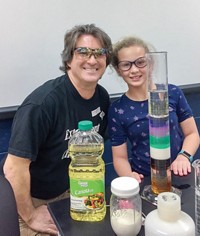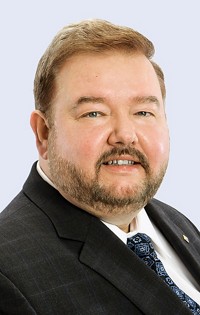Advertisement
Grab your lab coat. Let's get started
Welcome!
Welcome!
Create an account below to get 6 C&EN articles per month, receive newsletters and more - all free.
It seems this is your first time logging in online. Please enter the following information to continue.
As an ACS member you automatically get access to this site. All we need is few more details to create your reading experience.
Not you? Sign in with a different account.
Not you? Sign in with a different account.
ERROR 1
ERROR 1
ERROR 2
ERROR 2
ERROR 2
ERROR 2
ERROR 2
Password and Confirm password must match.
If you have an ACS member number, please enter it here so we can link this account to your membership. (optional)
ERROR 2
ACS values your privacy. By submitting your information, you are gaining access to C&EN and subscribing to our weekly newsletter. We use the information you provide to make your reading experience better, and we will never sell your data to third party members.
Policy
Valuing our ACS Volunteers
by Howard Peters, ACS Director-At-Large
August 21, 2006
| A version of this story appeared in
Volume 84, Issue 34
My earlier director's comments were about encouraging chemists to get involved in their local and international science fairs (C&EN, Jan. 31, 2005, page 45) and about the value of mentoring (C&EN, Oct. 31, 2005, page 42).
Last spring, I served as a special awards judge for ACS at the INTEL International Science & Engineering Fair (ISEF) in Indianapolis. For me, it was an incredible experience, and in this message, I hope to convey some of the excitement you are missing if you are not involved.
The official ISEF results are on the Web at www.sciserv.org. C&EN reported (June 12, page 41) that 1,200 international projects were judged by 1,800 category and special judges and that $4 million in prizes, grants, internships, and scholarships were awarded. (On a personal note, I am a patent attorney, and it was particularly gratifying to me to see the large number of high school students who had already filed for U.S. patents.)
The Indianapolis community welcomes volunteering and community outreach. Past Indiana Local Section chairs Dawn Parks (Eli Lilly) and Nneka Breaux (Dow AgroSciences) cochaired the chemistry category prizes that awarded a total of $20,000. Current Indiana Local Section Chair Brian Mathes (again, Lilly) led our ACS group in judging in a knowledgeable, efficient, and professional manner. For most of the Indy corporations represented (Lilly, Dow Agrosciences, Rolls-Royce, et cetera), their contribution to ISEF was providing a cadre of judges for the more than 24 hours of volunteer service and considering it to be part of their regular jobs.
Box A shows an estimated dollar value for the volunteer time for the ISEF judges. This remarkable generosity on the part of our scientific and engineering community should not go unnoticed in a time when there is much talk (and regrettably lip service) about supporting chemistry, science, engineering, and innovation.
At the same time, volunteer value doesn't show up on the ACS balance sheets or its annual report. It doesn't show up on the annual reports of the board, committees, regional meetings, divisions, or local sections. We have heard again and again that the total annual costs including overhead of keeping a chemist or engineer supported in the lab is about $250,000. Roughly, for an eight-hour day, five days a week for a year, that comes to well over $100 per hour. Box B shows the total value that can be estimated for the whole membership of ACS.
What is ACS doing to value and help our volunteers? Is ACS doing enough? ACS provides contacts, networking, infrastructure, insurance, and some funds for activities, among other things, but ACS volunteers each day, month, and year are the ones who see that the business of ACS continues in an orderly way across the U.S. I assert that we should place high value on the expertise of our chemists and engineers. We ask our volunteers to travel, multitask, raise funds for local and regional activities, deal with a difficult public, interact with state and local officials, and follow local and state safety regulations. The true monetary value of that volunteer expertise to ACS should be considered to be at least $100 an hour.
The point of the exercises in Boxes A and B is that it is difficult to calculate the value of our ACS science volunteers and their true monetary value. The calculation is hard work, but it needs to be done. (The sports world does it all the time—see your daily newspaper.)
And this exercise does not cover the funds or gifts-in-kind provided by local individuals, corporations, and schools.
ACS President E. Ann Nalley recently requested that groups within ACS provide estimates of their volunteer time on an annual basis. For the first time, we may be able to get numbers to establish a baseline. I, for one, would like to see this number included in all future annual ACS reports. I would also like to see an estimate of how much in funding our local sections and divisions raise annually for our ACS programs.
How does ACS encourage and recognize volunteer effort? ACS sponsors a National Award for Volunteer Service; local sections and divisions have had volunteer awards for years. Nalley is now focusing on ACS regional volunteer awards. But I believe that we need to expand our recognition and encouragement of our valuable volunteers. ACS works because of them.
Views expressed on this page are those of the author and not necessarily those of ACS.
Box A
Value of Judges for INTEL International Science & Engineering Fair
Assume that the 1,800 highly trained scientific volunteer judges gave 24 hours of their time, valued at $100/hour (round-trip on their own, most paying own travel, lodging, and expenses).
1,800 judges · $100/hour · 24 hours = $4,320,000 gift-in-kind in two days
Box B
Annual Value of ACS Volunteer Time
Assume ACS has roughly 160,000 ACS members, and assume that each member provides one hour of volunteer time per month. (Yes, I agree that some will volunteer more and some less, but altogether the volunteer hours will average out.)
160,000 volunteers · 12hours/year · $100/hour = $192,000,000-a number that is never reflected in our ACS balance sheets





Join the conversation
Contact the reporter
Submit a Letter to the Editor for publication
Engage with us on Twitter